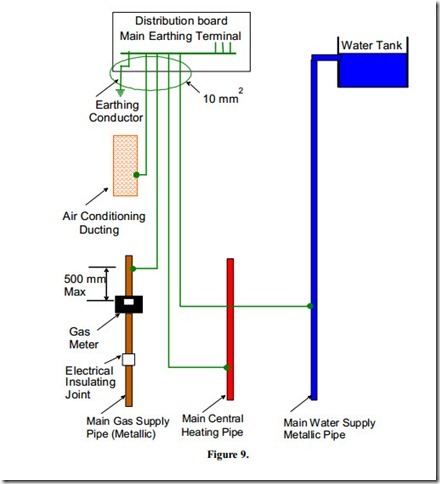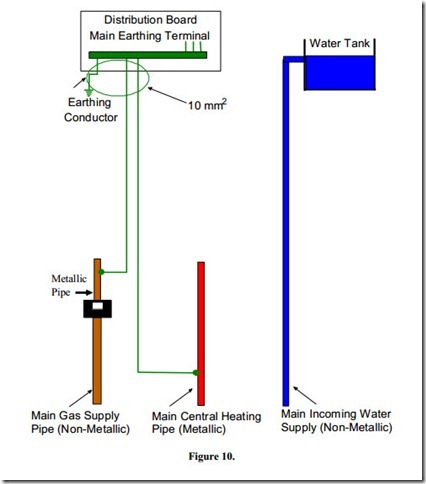Equipotential Bonding
Bonding and earthing are two different operations. They must not be confused.
Bonding simply means making an electrical connection between all metal enclosures etc., of the installation ( “exposed conductive parts” ) and the metal of all non-electrical services ( “extraneous conductive parts” ). This is done to ensure that no potential difference can appear between any of these items under fault conditions. A potential difference appearing between any two simultaneously accessible parts introduces the risk of shock to persons or animals in the area.
There are two types of equipotential bonding:
1. Main Equipotential Bonding
2. Supplementary Equipotential Bonding
Main Equipotential Bonding
Main equipotential bonding connects together all conductive parts of the main engineering services in an installation, to the main earthing terminal. Examples of the main engineering services are:
· Metal pipes for central heating, gas, water
· Metal ducting for heating and air conditioning systems
· Structural metal parts of the building
Main Equipotential Bonding on a Domestic System with Metallic Incoming Services
Main Equipotential Bonding on a Domestic System with Non-Metallic Incoming Services
Supplementary Equipotential Bonding
Supplementary equipotential bonding is generally applied to a location in an installation. It connects together all extraneous conductive parts and all exposed conductive parts in the location.
Water may conduct electricity. Extra safety measures should be applied to locations where electrical equipment is used in close proximity to water or steam. Kitchens, utility rooms, bathrooms and shower rooms are such locations.
Equipotential Bonding in a Kitchen / Utility Room
In kitchens and utility rooms, all extraneous conductive parts such as metal sinks and metal pipes must be bonded together. This equipotential bond must then be connected to a local protective conductor.

